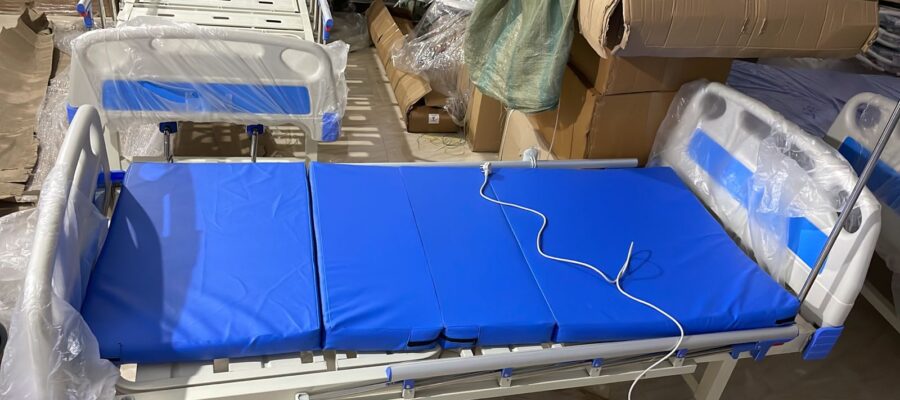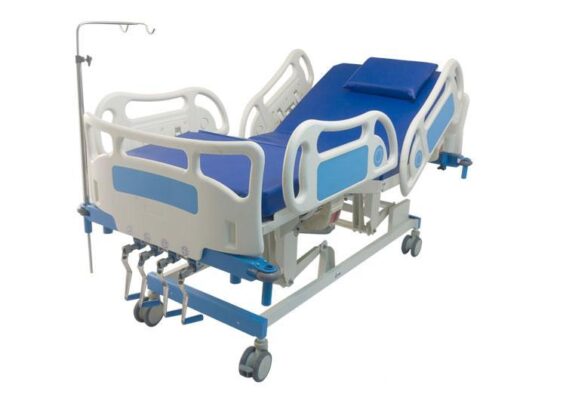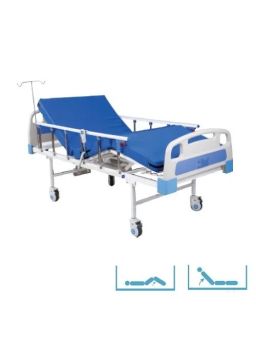
Ryle’s Tube popularly referred to as ‘Nasogastric tube’ or NG tube is a long and narrow bore tube, made out of silicone or polyurethane, prominently used to gain access to a patient’s stomach and its contents. The Nasogastric tube is mainly used for the treatment of stroke patients with dysphagia and on patients on ventilators.
Purpose Of Nasogastric Tube:
The Nasogastric tube is inserted primarily for two purposes;
- For Nasogastric Aspirations – Nasogastric Aspiration is the process of emptying the upper gastrointestinal tract of gastrointestinal secretion and swallowed air. Nasogastric aspiration is also used in cases of poisoning to drain the ingested toxic liquid and to extract gastric liquid samples for analysis.
- For feeding and administering medicines and other oral agents like activated charcoal.
Types Of Nasogastric Tube:
Nasogastric tubes are of three types, namely;
- Levin Tube: Levin tube is a single lumen rubber or plastic tube mainly used for the administration of medication and or nutrition.
- Salem Sump Tube: The Salem sump tube is a large bore tube with double lumen. One lumen is meant for suction and drainage, while the other smaller lumen is used for ventilation.
- Moss Tube: The Moss tube is a triple lumen tube with radiopaque tip. The first lumen is positioned and inflated in the cardia, the second lumen serves as oesophageal aspiration port and the third lumen is used as duodenal feeding port.
Nasogastric Tube Care At Home:
Here are a few pointers to follow for effective nasogastric tube care at home;
- Brush your teeth twice daily.
- Change the nasal tape on every alternate day or when it gets loose.
- Always clean your nostril area where the NG tube goes, with a cotton tip applicator dipped in warm water. If the nose has become sore you can apply water soluble lubricant.
- Keep the nasal tape secured at all times, if incase the nasogastric tube comes out contact your doctor immediately.
- Flush the feeding tube with water after every feeding session or medication.
- In case the nasogastric tube gets clogged flush it with warm tap water. You can also try putting a syringe into the feeding tube and pull back the plunger. If the NG tube still stays clogged contact your doctor as soon as possible.
It is imperative to take adequate precaution for the nasogastric tube care at home
Nasogastric Tube Insertion:
Nasogastric tube insertion, medically referred to as nasogastric intubation, is the process of inserting a nasogastric tube through a patient’s nose, past the throat and down into the patient’s stomach. The nasogastric or Ryle’s tube insertion procedure is a detailed one and should be followed diligently to avoid any complication and discomfort to the patient. Here is the step by step Ryle’s tube insertion procedure below;
- Before inserting the tube explain the procedure to the patient to prepare them for the procedure.
- Provide a signal to the patient for when they wish to stop the procedure owing to some discomfort.
- Make the patient sit in an upright position, with heads neither tilted backwards or forward.
- Measure the nasogastric tube from the bridge of the nose to the earlobe and then to the halfway point between the lower end of the sternum and the navel.
- Lubricate about 2 – 4 inches of the tube with a lubricant.
- Pass the tube through the bigger of the two nostrils, past the pharynx, through the oesophagus and into the stomach.
- When the tube passes the pharynx the patient experience discomfort and gag, in this time ask the patient to mimic swallowing or give the patient water with straw to sip and then continue with the insertion process.
- If any resistance is met, try slightly rotating and advancing the tube but never force the tube inside.
- Stop if patient continues to show distress or becomes cyanosed.
- Once the tube has inserted past the pharynx, it is then easily inserted in to the stomach.
- Secure the tube in place to avoid any movement.
- Check the tube’s position by pH testing method and or X – ray.
Ryle’s Tube Feeding:
Ryle’s tube feeding is aimed towards giving nutritional support to people who are unable take their food and drink orally. Some of the supplies and equipment needed for Ryle’s tube feeding are as follows;
- Gloves and feeding pump
- Feeding solution
- Large Catheter tip syringe
- Feeding bad with tubing
- Water
- Measuring cup
Ryle’s Tube Feeding Procedure:
The following steps are involved in the Ryle’s tube feeding procedure;
- Prepare feeding formula and mix thoroughly, shake before administering the formula as it may settle down in the can.
- Explain the procedure to the patient.
- Make the patient sit or get his head elevated to atleast 30 to 40 degrees angle to avoid the risk of aspiration, pneumonia and possible death due to pulmonary complication.
- Check placement of the tube before every feeding session by aspirating stomach contents or by measuring the pH of aspirated gastric secretions.
After securing the above points then the feeding can take place either through a feeding bag, by a syringe or a feeding pump as advised by the doctor.
About Nursing Services For Ryle Tube Insertion At Home:
And, trained and caring nurses at Emergency Care Solution take all the necessary care and precaution while performing the process of Ryle’s tube insertion. Nurses help out the patient for Ryle’s tube insertion to drain the gastric contents, introduce a passage into the GI tract, obtain a specimen of the patient’s gastric contents, and decompress the patient’s stomach.
When you are using NG tube, the nasogastsric tube care should be of great priority and, with expert nurses at your help, you need not worry about it, as experienced nurses give the right nasogastric tube care. Besides this, nursing service for Ryle’s tube insertion troubleshoots problems related to NG, if they arise, and ensures that the patient suffers no discomfort.
When you have nasogastric intubation for feeding at home, caring nurses take the right care by providing you the necessary liquid food and water through the feeding tube. Also, skilled nurses provide you the required medication through the tube. Thus, our nursing service for Ryle’ tube insertion works towards offering the patient best possible comfort and taking all necessary care of the patient.
Outstanding Benefits Of Getting Ryle’s Tube Insertion Done At Home:
- Right Care In Comfort Of Your Home: With at-home nursing service available for Ryle’s tube insertion, you need not travel all the way to hospital to get the medical assistance for the same. Our caring nurses will take all the necessary care and help you get Ryle’s tube insertion done in comfort of your home without any concerns. By keeping your comfort on priority, our nurses ensure that you experience no discomfort and fulfil your Ryle’s tube insertion requirements without any hassles.
- Economical Option: If your requirement for nursing for Ryle’s tube insertion is quite frequent, then choosing at-home nursing service for the same could prove to be an economical solution. With at-home nursing service, skilled nurses would visit you at your home to help you with the Ryle’s tube insertion and that would save your traveling expenses to and from the hospital. Besides this, getting an excellent nursing service at home for nasogastric intubation would also save your time and energy to a great extent.
- Maintains Hygiene & Educates Your Family: Skilled nurses not only help you with draining your gastric content by helping you with Ryle’s tube insertion, but also ensure that the entire procedure is performed hygienically. Nurses follow a great hand hygiene. They put on disposable gloves while carrying out nasogastric intubation. Also, expert nurses visiting you at home educate your family members about hygienic and care practices to be followed when one of your family members is undergoing Ryle’s tube insertion.
Nasogastric Intubation At Home
So, if you need nasogastric intubation any time, simply give us a call for our excellent nursing services and one of our skilled nurses will visit you at home to ensure you benefit from smooth Ryle’s tube insertion without any concerns
https://www.emergencycaresolution.com/contact-us/
Ryle’s Tube Feeding at Home
What is nasogastric tube intubation?
When a patient can’t eat or swallow, they may need to have a nasogastric tube inserted. This process is known as nasogastric (NG) intubation. During NG intubation, a nurse will insert a thin plastic tube through your nostril, down your oesophagus, and into your stomach. Once this tube is in place, they can use it to give you food and medicine.
NG intubation is most common in conditions such as:
- Neck or facial injuries
- Neck or facial surgery
- Mechanical ventilator for breathing
- Intestinal obstruction or blockage
- Comatose patients
Why choose CARE at HOME?
- Qualified nurses who are trained in our hospital
- Nurses are evaluated by specialists before field deployment
- Affordable
- In the comfort of your home
- Avoid all cross infections
You can avail our services for Ryle’s tube insertion, removal and feeding.
Book our services now!
- Book our service online or via our Call Centre at 973935455.
- Our executive will schedule an appointment.
- The nurse will arrive at the stipulated time and deliver the service.



